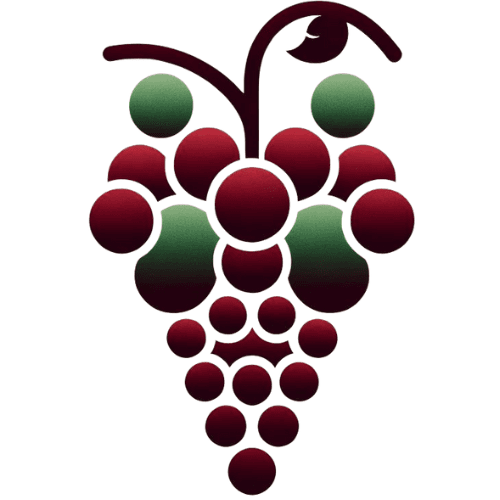Welcome to a journey through the world of Sangiovese wine. This blog post will guide you through the unique characteristics of this popular Italian wine, from its distinct flavor profile to its rich history. Whether you're a seasoned wine enthusiast or a curious beginner, this comprehensive guide will deepen your understanding and appreciation of Sangiovese wine.
The Origin and History of Sangiovese Wine
Sangiovese, a red Italian wine grape variety, holds a significant place in the world of wine. Its roots trace back to the Tuscany region of Italy, where it has been cultivated since the 16th century. The name "Sangiovese" comes from the Latin "Sanguis Jovis," meaning "the blood of Jove," reflecting its deep, rich color.
The grape has a long history of adaptation and evolution, with many sub-varieties emerging over the centuries. Despite its Italian origin, Sangiovese has found a home in various parts of the world, including California and Argentina. Its adaptability and versatility have contributed to its global popularity.
Sangiovese is the primary grape used in the renowned Chianti and Brunello di Montalcino wines. It's also a key component in Super Tuscan wines, a term coined in the 1970s for a new class of Italian wines that broke away from traditional winemaking rules.
The Unique Characteristics of Sangiovese Grapes
The Sangiovese grape is known for its thin skin and elongated shape. These characteristics contribute to the wine's lighter color and high acidity. The grapes are late-ripening, which allows them to develop complex flavors while maintaining their natural acidity.
The Sangiovese vine prefers a warm climate and thrives in limestone-rich soils. The grape's sensitivity to its growing environment results in a wide range of flavors and styles, depending on where it is cultivated. This terroir-driven variety expresses the characteristics of its environment, making each bottle of Sangiovese a unique experience.
The Flavor Profile of Sangiovese Wine
Sangiovese wine is celebrated for its complex flavor profile. It typically presents a medium to full-bodied taste with high acidity and moderate to high tannin levels. The wine's high acidity makes it an excellent companion to food, particularly Italian cuisine.
The primary flavors of Sangiovese wine include red fruits like cherries and strawberries, along with earthy notes of herbs, balsamic vinegar, and sometimes even tobacco. As the wine ages, it develops more complex flavors, including fig, prune, and leather.
The flavor of Sangiovese wine can vary significantly based on where the grapes are grown and how the wine is made. For example, Sangiovese grown in the Chianti region tends to be more savory and rustic, while Sangiovese from Montalcino often has a richer, more intense flavor.
Sangiovese Wine and Food Pairing
Sangiovese wine's high acidity and robust flavor profile make it a versatile choice for food pairing. It pairs well with a variety of foods, particularly those with high acidity or fat content.
Italian cuisine, with its rich sauces and hearty meats, is a natural match for Sangiovese. The wine's acidity cuts through the richness of the food, while its earthy flavors complement the ingredients. From pasta with tomato-based sauces to grilled meats and aged cheeses, Sangiovese enhances the flavors of the food it accompanies.
However, the versatility of Sangiovese extends beyond Italian cuisine. It can also pair well with a variety of international dishes, including grilled meats, roasted vegetables, and hearty stews.
The Aging Potential of Sangiovese Wine
Sangiovese wine has excellent aging potential. While some lighter versions are best enjoyed young, many Sangiovese wines can be cellared for years, or even decades, developing more complex flavors over time.
The high acidity and tannin levels in Sangiovese contribute to its longevity. As the wine ages, the tannins soften, and the flavors evolve, often revealing notes of dried fruit, leather, and spice.
However, not all Sangiovese wines are meant for long-term aging. Some, particularly those made in a more modern style, are designed to be enjoyed while they're young and fresh. It's important to research or ask about a specific wine's aging potential before deciding to cellar it.
The Global Influence of Sangiovese Wine
While Sangiovese is an Italian grape, its influence extends far beyond Italy's borders. The grape has been successfully cultivated in various parts of the world, including the United States, Australia, and Argentina.
In California, Sangiovese has found a new home, producing wines that are fruit-forward and approachable, with a distinct New World style. Australian Sangiovese, on the other hand, often showcases a balance between Old World earthiness and New World fruitiness.
Despite these global influences, Sangiovese remains a quintessentially Italian grape. Its ability to express its terroir makes it a fascinating variety for wine lovers to explore.
The Last Sip: Appreciating Sangiovese Wine
Sangiovese wine, with its rich history, unique characteristics, and diverse flavor profile, offers a captivating journey for wine enthusiasts. Its versatility in food pairing and its excellent aging potential further enhance its appeal. Whether you're savoring a rustic Chianti or a fruit-forward Californian Sangiovese, each sip offers a taste of the grape's unique journey from vine to bottle. So, pour yourself a glass of Sangiovese, and toast to the rich tapestry of experiences this remarkable wine has to offer.

